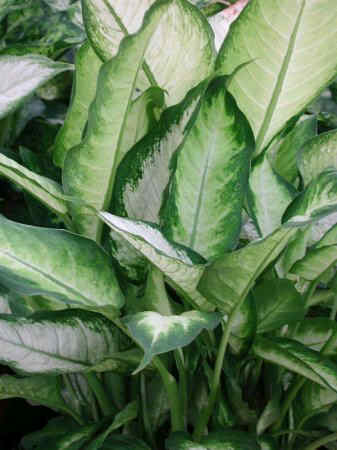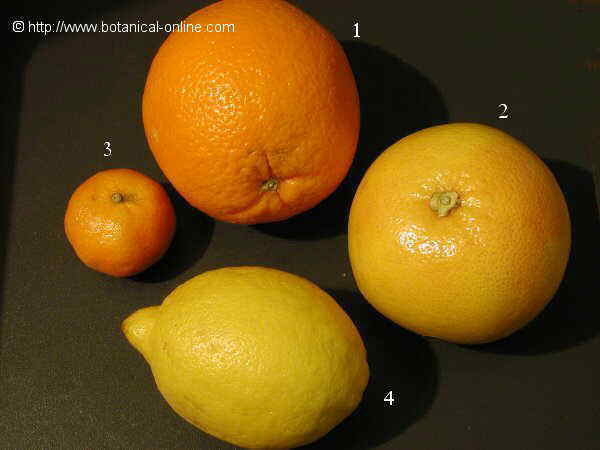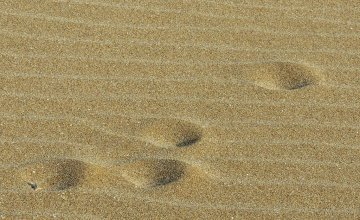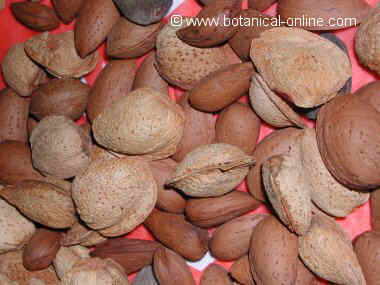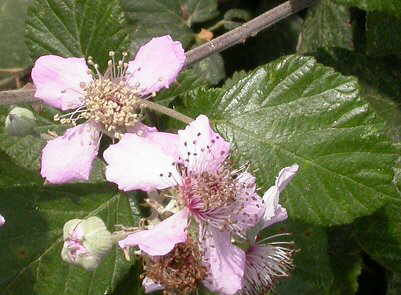Contents
- 1 What are mushrooms good for?
- 1.1 NUTRITIONAL PROPERTIES OF MUSHROOMS
- 1.2 What properties do mushrooms have as food?
- 1.3 Differences between mushrooms and vegetables
- 1.4 Characteristics of mushrooms
- 1.5 What are the benefits of eating mushrooms?
- 1.6 Mushrooms for low fat diets
- 1.7 Nutrients in mushrooms
- 1.8 Mushrooms are rich in vitamins and minerals
- 1.9 Do mushrooms have a lot of proteins?
- 1.10 Mushrooms contain a lot of minerals and vitamins
- 1.11 Medicinal benefits of mushrooms
- 1.12 Contraindications and side effects of mushrooms
- 1.13 What is the composition of some raw mushrooms?
What are mushrooms good for?
NUTRITIONAL PROPERTIES OF MUSHROOMS
What properties do mushrooms have as food?
Edible mushrooms are those that are consumed in many regions of the world. They are fleshy, tasty and nutritious.
Dietetic, mushrooms are considered within the group of vegetables, because they share certain nutritional characteristics: they provide very few calories, are rich in water and contain fiber, minerals and vitamins similar to those of vegetables.
Differences between mushrooms and vegetables

Grilled chanterelles with garlic and parsley
Mushrooms are not technically plants, but fungi. Therefore, they have important biological differences. At the nutritional level, they lack chlorophyll, although they have other antioxidants such as selenium.
Characteristics of mushrooms
Mushrooms are a type of fungi that have developed structures to better disperse their spores. These structures are known in scientific language as carpophores, and in street language as mushrooms. Thus, mushrooms are only the reproductive part (hardened hyphae) that are capable of developing certain fungi.
What are the benefits of eating mushrooms?
The mushrooms that are currently consumed may be of commercial origin, which means that they have been cultivated for sale, or of wild origin, collected by oneself or by experts. In this second case, it is necessary to take into account that there are mushrooms that are potentially poisonous. For this reason, only those mushrooms of which their edibility and mode of consumption are known can be eaten.
Mushrooms for low fat diets

Different types of edible mushrooms in a market. The sale of mushrooms in itinerant shops when autumn arrives is a common occurrence in many places where they abound.
First thing that mushrooms stand out is their lightness. Mushrooms contain a very large amount of water (between 82 and 92%) and a very low content in carbohydrates and fats. They move approximately between 1 and 3% carbohydrate on a 1.5% fat.
This is the reason why they are used in some weight-loss diets. As part of the “shock” in many of these diets. That is, they are the staple food for one or two days in the weekly schedule. For this reason, some diets recommend these foods for obese people.
Nutrients in mushrooms
We have to consider that other components contribute to the lightness of this food. Among them, we highlight their wealth in potassium or their high fiber content.
Potassium, as we shall see below, helps to remove body fluids and fiber produces a greater feeling of satiety while promotes intestinal transit, preventing the occurrence of constipation, reducing the absorption of cholesterol and toxins.
Mushrooms are rich in vitamins and minerals

Selling mushrooms by travelling- vendors in Autumn is something common in many places where mushrooms abound
Mushrooms have been accused to be a little nutritious food. It’s not completely true. While containing little fat or carbohydrates, they are a fairly rich food in minerals and vitamins.
Do mushrooms have a lot of proteins?
Although there was a desire to state that mushrooms can be a substitute for animal protein, the protein content of mushrooms is relatively low and does not come at all to animal meat (about 25%) or fish (20%), not even those containing cereals, legumes, or nuts (about 15%) within the plant foods.
Average protein content in mushrooms is similar to that of vegetables (between 2 and 7%), except when they are dehydrated (about 9%.)
Mushrooms contain a lot of minerals and vitamins
Mushrooms stand out more nutritionally because of their mineral and vitamin content. They are a good source of potassium (about 1.5%), phosphorus (about 1.5%) selenium (20 mg per 100 g) and copper (500 mg per 100g)
*More information: Minerals and vitamins in mushrooms
Medicinal benefits of mushrooms

Orange chanterelle mushroom (Cantharellus lutescens) is usually sold in markets for its ability to withstand fine drying, allowing it to be preserved for a long time very easily. It is a type of highly aromatic and delicious mushroom
In addition to its nutritional properties, it has been proven in recent decades that most edible mushrooms contain components that are beneficial to health.
The medicinal properties of some mushrooms such as reishi (Ganoderma lucidum), maitake (Grifola frondosa) and shiitake (Lentinus edodes) have been used for a long time in the East, but its recognition and expansion among Western countries is increasingly evident.
Among the main healing properties of mushrooms, we are the following:
- Healing of Cancer: It is been studied the possibility that some mushrooms can be useful in curing cancer. This research is conducted specifically with maitake mushroom. They contain lentinan and fraction D, two principles that could stop the growth of cancer cells by stimulating lymphocytes and macrophages and, therefore, they prevent metastases from some cancers.
- Stimulation of the defensive system:This same fungus have been attributed to increase the defense system properties. They are obtained from a series of extracts rich in chitin and betaDglucans 16 that are able to stimulate red blood cells responsible for neutralizing the invasion of bacteria or viruses.
- It has been found that fungi in general has developed a number of components in their natural environment ot defend themselves from bacteria. These same principles are those that are ingested by people when they eat mushrooms.
- Fluidization of blood and arteries protection: Many mushrooms contain principles with antiplatelet properties very useful to decrease platelet aggregation and cause blood to flow more easily, while protecting the walls of blood vessels.
- Bying this, they improve circulation and help prevent the onset of many cardiovascular diseases, such as heart attacks, heart palpitations, ateroclerosis, strokes, etc.
Contraindications and side effects of mushrooms
Despite its lightness and richness in vitamins and minerals, we should not consume large amounts of mushrooms. Mushrooms contain in its composition many hard substances such as chitin.
Chitin is a substance that forms the cell walls of fungi. It is the same product that forms the skeletons of insects, crustaceans or arachnids. The human digestive system can not digest chitin.
Therefore, mushrooms can be indigestible if eaten in large quantities.
Mushrooms in the kitchen should play a more interesting role. They should be considered like herbs or spices.
Properly cooked and in reasonable quantities, they add to the meat or vegetables aromas and flavors, turning what should be “more or less anodyne” in “authentic culinary delights”.
What is the composition of some raw mushrooms?
Composition of some mushrooms per 100 g | ||
Component | Common mushroom raw | Portobello raw |
| Water | 91,81 g | 91,20 g |
| Calories | 25 Kcal | 26 Kcal |
| Fat | 0,33 g | 0,20 g |
| Proteins | 2,9 g | 2,5 g |
| Carbohydrates | 4,08 g | 5,07 g |
| Fiber | 1,2 g | 1,5 g |
Potassium | 370 mg | 484 mg |
Sodium | 4 mg | 6 mg |
Phosphorus | 104 mg | 130 mg |
Calcium | 5 mg | 8 mg |
Copper | 0,49 mg | 0,400 mg |
Magnesium | 10 mg | 11 mg |
Manganese | 0,112 mg | 0,142 mg |
Iron | 1,04 mg | 0,60 mg |
Zinc | 0, 73 mg | 0, 60 mg |
Selenium | 8,8 mg | 11 mg |
Vitamin C | 2,3 mg | 0 |
Vitamin B1 (Thiamin) | 0, 090 mg | 0, 077 mg |
Vitamina B2 (Riboflavin) | 0, 424 mg | 0, 480 mg |
Niacin | 4, 040 mg | 4, 500 mg |
Folacine | 12 mcg | 22 mcg |
Vitamin B6 | 0, 102 mg | 0, 100 mg |
Vitamin A | 0 | 0 |
Vitamin E | 0, 120 mg | 0, 129 mg |
Component | Cremini raw | Shiitake cooked with salt |
Water | 92,30 g | 83, 48 g |
Calories | 22 Kcal | 55 Kcal |
Fat | 0,10 g | 0,22 g |
Protein | 2,5 g | 1,56 g |
Carbohydrates | 4,12 g | 14, 28 g |
Fiber | 0,6 g | 2, 1 g |
Potassium | 448 mg | 117 mg |
Sodium | 6 mg | 4 mg |
Phosphorus | 120 mg | 29 mg |
Calcium | 18 mg | 3 mg |
Copper | 0,500 mg | 0,896 mg |
Magnesium | 9 mg | 14 mg |
Manganese | 0,142 mg | 0, 204 mg |
Iron | 0,40 mg | 0,44 mg |
Zinc | 1,10 mg | 1, 33 mg |
Selenium | 26 mg | 24,8 mg |
Vitamin C | 0 | 0,8 mg |
Vitamin B1 (Thiamin) | 0, 095 mg | 0, 037 mg |
Vitamina B2 (Riboflavin) | 0, 490 mg | 0, 170 mg |
Niacin | 3, 800 mg | 1,5 mg |
Folacine | 14 mcg | 21 mcg |
Vitamin B6 | 0, 110 mg | 0, 159 mg |
Vitamin A | 0 | 0 |
Vitamin E | 0, 113 mg | 0, 120 mg |
![]() More information on other medicinal mushrooms.
More information on other medicinal mushrooms.

